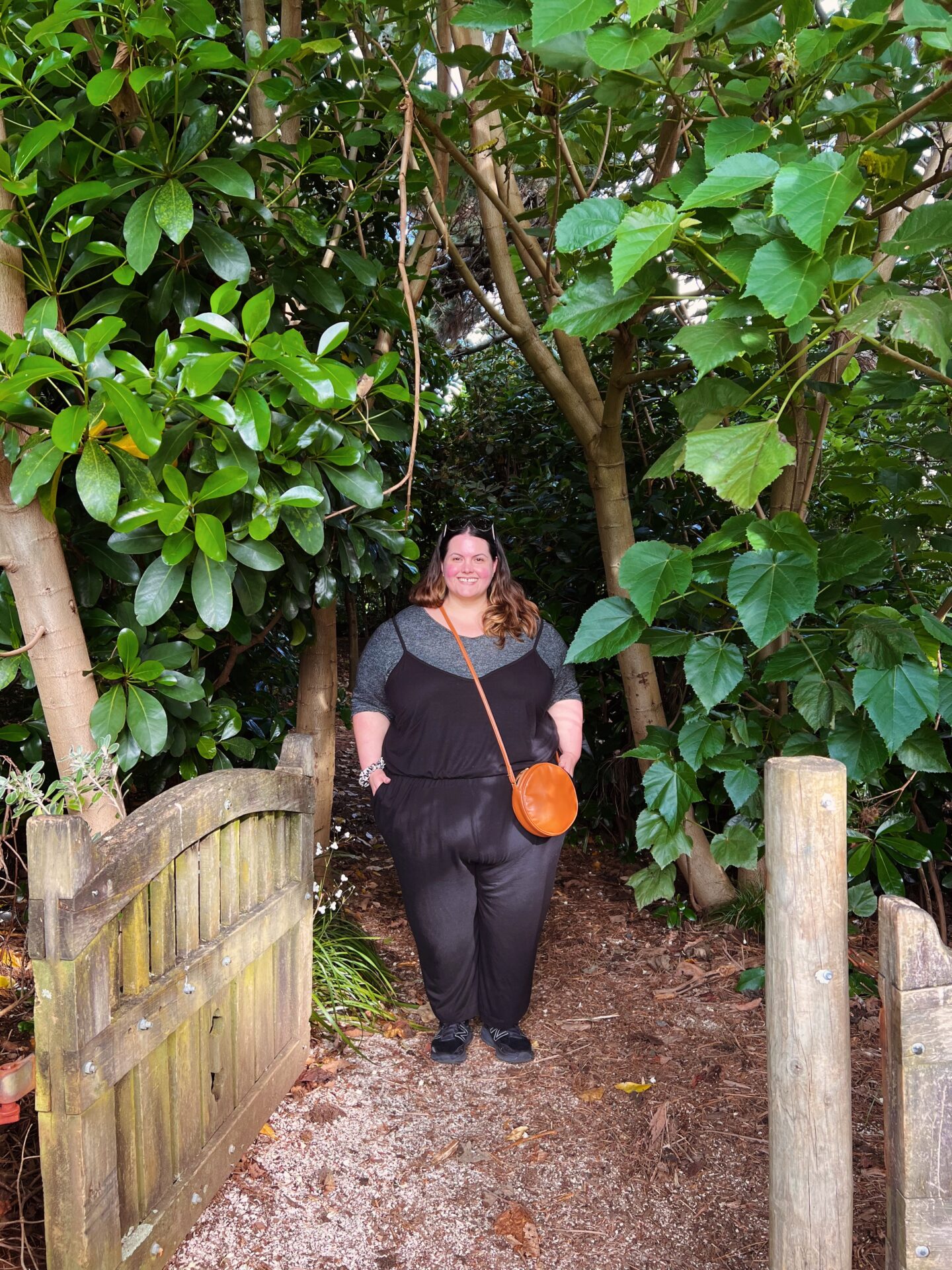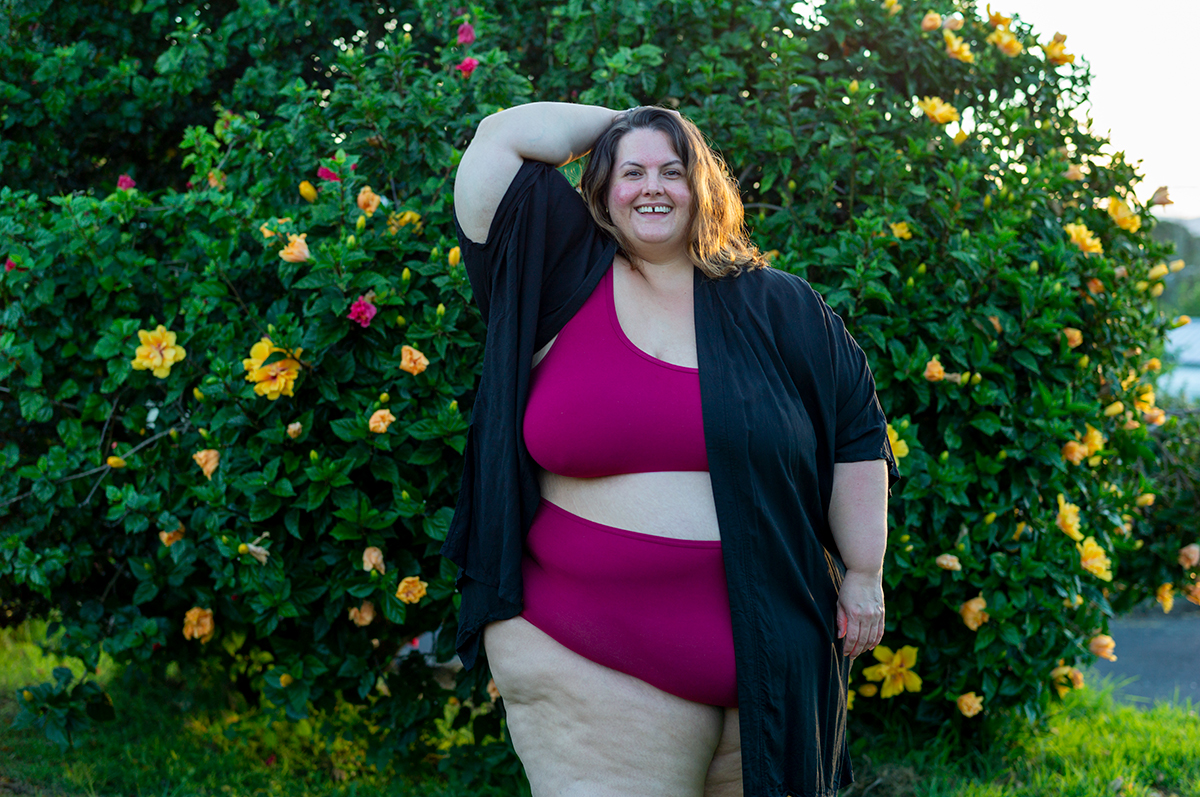From my teenage years well into my 30’s, I thought my arms and legs looked the way they do solely because I was fat. Even though most other fat people that I know don’t have arms and legs that look like mine. But I have family members whose bodies look like mine – I guess I thought it was a genetic thing. Just how our whānau looks, you know?
Big lumpy legs, saddlebags, that’s because I’m fat right? The dimples in my legs, that’s cellulite. Sometimes they look extra swollen and they hurt, that’s fluid retention isn’t it? The bruises on my legs, I’m just clumsy. Aching legs, I need to work on my fitness a bit more. Feeling pain when someone massages my legs, or the physio touches them, or when the dog (a chihuahua) stands on my lap? Surely everyone experiences these things? No doctors ever mentioned that any of these things might be caused by something else. Not when I repeatedly had lab results that weren’t quite right, when I mentioned that they were causing me ongoing issues, or even when I had surgery in 2017. I was just told that I was fat, and that I should lose weight.
When I found people on the internet whose bodies looked like mine, and they talked about being diagnosed with lipoedema, a chronic disease that affects the fat and connective tissue in your body, I had an ah ha! moment. Like someone had just shone a massive spotlight on something that had been there all along. Like so many things finally made sense.
When I asked on my Instagram what you most wanted me to write about, lipoedema was the most popular answer. I’m not a medical professional so can’t give medical advice, but what I can do is share my own experience with getting a diagnosis, and what I’m doing in terms of management.
View this post on Instagram
Getting a lipoedema diagnosis
It took me a very long time to go from “I think I have lipoedema” to actually bringing it up with a doctor. Not because I thought my GP wouldn’t be receptive to it, quite the opposite. My doctor is incredible and has been fantastic at providing weight neutral health care for years. It was more that I knew the reality of my lipoedema being quite advanced. I didn’t want to hear her say she couldn’t help me. Better to never have asked than to be turned down and disappointed, or something like that.
However, I’ve noticed the impacts of this chronic illness on my body more and more, including increased pain and diminished mobility. So eventually, armed with some information I’d gotten from Talk Lipoedema, I sucked it up and went to see my GP. She asked me about my symptoms (which date back to when I went through puberty), and agreed that she thought I had lipoedema. The next step was a referral to the dermatology department at the hospital, so she took some photos of my body and sent that off.
It took seven months for me to get an appointment with the dermatologist. By the time I did, Tāmaki Makaurau Auckland was in Level 4 lockdown because of Covid-19. That mean that I couldn’t have an in person consult with the dermatologist, so we had a lengthy phone consultation, aided by the information and photographs my GP had sent through. He confirmed the diagnosis of stage 3 lipoedema and we talked about possible management options. I got another referral – this time to the lymphoedema clinic who could help me with getting compression.
My appointment with the lymphoedema clinic happened within six weeks. We talked further about possible management options for my lipoedema and I was measured for my compression.
View this post on Instagram
Managing my lipoedema
Let’s start with the bad news: there is no cure for lipoedema. It’s a chronic disease that I’m going to have for the rest of my life. The good news is that there are options available for managing it. These might differ depending on where you are located, what the healthcare system is like there, and how advanced your lipoedema is. For me, I was told the options were conservative measures like compression, diet, and maintaining an active lifestyle; and less conservative measures like surgery.
I’ve got two different types of compression – Haddenham lower leg ones that were prescribed by the lymphoedema clinic (these were publicly funded – which may not be the case in all areas) and full length Bioflect micro-massage leggings (I purchased these myself, via The Girouard Centre). I prefer the Bioflect leggings, as they cover from my stomach to my toes (so, a large section of my body affected by lipoedema) and are really comfortable to wear. There are lots of other brands out there that do compression garments of varying strengths and you can get custom garments made but the Bioflects came really highly recommended by other lipoedema ladies as well as the lymphoedema clinic as a good place to start.
I saw a dietician (which I paid for out of pocket) to get advice on anti-inflammatory eating to help with my lipoedema and also navigating my food allergies which had me feeling a bit stuck foodwise. I found them really helpful and got lots of great ideas on food options that would be beneficial to me.
All of the medical professionals I saw recommended weight loss for me and more specifically, weight loss surgery (WLS). And when talking about the possibility of surgery to help remove the diseased lipoedema fat, I was told that in order to get this as a treatment option, “significant” weight loss (aka WLS) would be required. I hate that whether or not I can get this treatment in NZ or Australia is really dependent on my weight (like many things in medicine seem to be) when I know people in other countries don’t have that same barrier. Unfortunately I can’t afford to travel to those places multiple times for treatment, so WLS looks like an inevitability for me in order to be able to access further treatment options, which makes me so sad and angry.

Where I’m at now
I wrote this post quite a while ago, but have been reluctant to share it because I don’t want people to weigh in with their unsolicited medical advice or opinions on my body. Usually I don’t discuss personal health stuff much with the general internet for those reasons. However, I often have people message me on Instagram about lipoedema so decided to share this in case someone finds it useful.
Wearing my compression garments does help – you’ll see these featuring regularly in my Instagram posts. Being active and making some dietary modifications has helped too, but that’s something that you won’t see me talking about much on the ‘gram. People talking about their diet and exercise is pretty boring (damn you diet culture for surrounding us with this never ending noise) and I’m not interested in adding to that. So far I’m noticing improvements in both my pain and my mobility, but these are small. The reality is that my lipoedema is pretty advanced so it’s looking more and more likely that I will require surgery in the future. I do know some people who have had lipoedema surgery using different methods, in different parts of the world, and have been following those with interest.
If anyone reads this and thinks they might have lipoedema, I’d recommend reading some of the resources I’ve linked below and having a chat to your GP.
Lipoedema resources
Talk Lipoedema (based in Scotland but lots of great info).
Getting a Lipoedema Diagnosis (I used lots of this info when I spoke to my GP).


